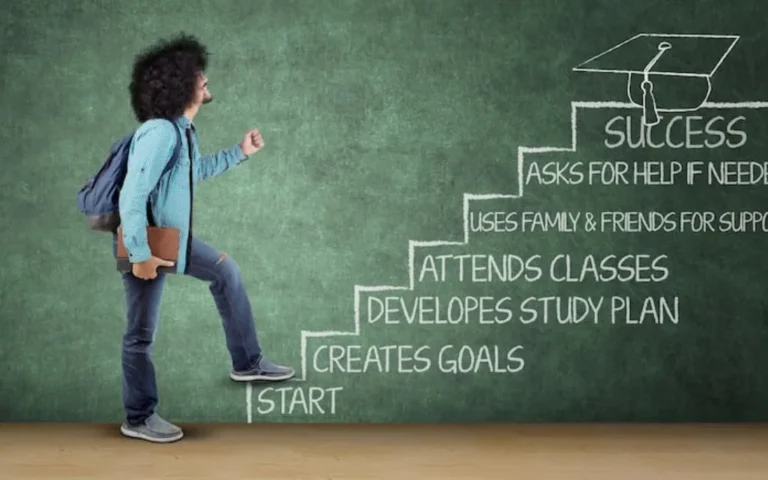Vocational Education in Australia Meaning, Importance, Types, and Future Career Opportunities in 2025
Introduction
Vocational Education in Australia has emerged asA critical part in figuring out if someone can get a job, if they can work in a way that is well for the environment, and what kind of work they will do in the next . Because sectors are growing at very high rate and the need for educated professionals is inccreasing , traditional educational degrees that mostly focus on theory aren’t always suitable . Vocational education, on the other hand, teaches students opportunities’ that they can apply right quickly in the job or to establish their own business. It does this by having them do things.
What is Vocational Education?
In Australia, vocational education means courses of study that teach useful skills for jobs. Vocational programs, on the other hand, focus on hands-on experience instead of theoretical ideas. This gets students ready to go right into the workforce. TAFE, registered training organizations (RTOs), and industry-based programs are some of the places where people can get training. These programs make sure that students obtain the skills they need to meet the needs of the job market.
In Australia, vocational education covers a wide range of fields, such as business, IT, hospitality, elderly care, construction, and renewable energy. Practical placements, apprenticeships, and internships help students connect what they learn in school with what they need to know to do their jobs. Australia’s labor market is becoming more competitive, thus vocational training is important to keep the country competitive on a worldwide scale

Importance of Vocational Education in Australia
Australian vocational education strengthens the workforce and solves national and global issues. One of its key benefits is closing the skills gap. Even with many university graduates, many organisations can’t locate enough ready-to-work professionals. Vocational education meets job market needs in healthcare, construction, and IT. TAFE colleges and RTOs teach real-world skills that assist students acquire careers in healthcare, hospitality, and skilled trades. Short-term courses in catering, beauty, and electrical work let people start their own businesses. Students gain confidence and skills in these classes. Promoting inclusivity is essential. Indigenous, migrant, and underprivileged groups can improve their socioeconomic status through subsidised vocational training.
Different Types of Vocational Education
Australia offers long range of vocational education options that can be tailored to the needs and professional goals of each student. Vocational classes in high school assist students get ready for work. These classes mix learning new skills with learning about other things. RTOs and public TAFE schools are important because they offer advanced degrees, diplomas, and certifications in many different fields. Students can work and learn at the same time through training programs and job shadowing. They combine learning in the classroom with learning on the job. In as short as two to six months, universities and schools that focus on careers can give students certificates that are recognized across vocational education the country. with short courses and micro-credentials.

Vocational Education vs Traditional Education
The difference between vocational education in Australia and regular education is what they focus on and what they hope to achieve. Traditional degrees focus on theory, critical thinking, and a wide range of information, while vocational training gives students skills they can use right away on the work. While academic degrees can take three to four years and don’t always lead to jobs, vocational certificates are shorter, cheaper, and more in line with what businesses require.
Advantages of Vocational Education
People, businesses, and society all benefit from vocational education in Australia. One of its best features is that it teaches kids useful skills. For example, it teaches how to create and how to take care of people. Unlike college degrees, many VET programs run from a few months to two years. It’s easier for students to find work. You can run in business, IT, senior care, hospitality, and farming with this system. Because the government provides money and assistance to many ideas , they are lesser than ordinary school. Teachers may give each student more personalized attention and instruction in smaller classrooms. Online and part-time classes may be aidful for students from diverse regions and for people who work.

Examples of Vocational Education
Vocational education in Australia encompasses an extensive spectrum of disciplines and equips pupils with practical skills that they may use right away in the job. In the fields of tourism and the hospitality industry, students study cookery, the management of hotels, and travel services. Participants in healthcare and aged care programs might prepare for careers in nursing aid, disability support, or elder care services. Important skills like plumbing, carpentry, and electrical work are part of the construction and trades industry and are typically taught through practical experience.
Aims and Objectives of Vocational Education in Australia
Apprenticeship training in Australia has many goals and makes a big difference. Vocational instruction’s major purpose is to help people get the abilities that they need to get jobs in the field they choose to work in. It gives people financial stability by helping them find steady jobs or start their own enterprises. Its function in fostering social justice is just as vital since it makes sure that groups that have been ignored or are different can get useful training. It also makes
Future of Vocational Education in Australia
There is a promising future ahead for vocational education in Australia, and it will be shaped by collaborations between industry and politicians, as well as technological developments. This future will be bright. The following are some examples of significant trends:
- Digital and Technology-Based Learning: Using VR, AR, and web resources for comprehensive instruction.
- Work-Based Learning Models: Focus on dual education systems and vocational education.
- International Recognition:Programs linked to worldwide accepted norms and badges.
- Government Investment:Programs that give money, such the the company Australians Scheme and Employment Training.
- Corporate Involvement:Industries work together to pay for training programs that help them find new talent.
Vocational education will continue to be a key part of Australia’s workforce plan, getting both young people and adults ready for new industries and worldwide job prospects.
Concluding Thoughts
Occupational training is no longer considered a secondary alternative in Australia when it comes to the educational opportunities that are available to students. As a consequence of the fact that it places a significance on aspects like as practicability, cost-effectiveness, and adaptability,
Frequently Asked Questions (FAQs)
1. What is the main difference between vocational education and university education in Australia?
Vocational education focuses on practical, job-specific skills, while university education emphasizes theoretical and academic knowledge. VET programs are usually shorter and more affordable, making them attractive for students seeking faster entry into the workforce.
2. Can international students access vocational education in Australia?
Yes. Australia welcomes thousands of international students each year into its VET system. These students can choose from a wide range of courses and benefit from globally recognized qualifications.
3. What types of qualifications are offered in Australia’s VET system?
The qualifications range from Certificate I to IV, Diplomas, Advanced Diplomas, and vocational graduate certificates and diplomas. Each qualification corresponds to a different level of skill and expertise.
4. How does vocational education in Australia support career growth?
Vocational education equips students with hands-on experience and industry-relevant knowledge, making them employable immediately after graduation. Many students also use VET as a stepping stone to further studies, including university degrees.
5. Is vocational education in Australia affordable compared to other options?
Generally, vocational courses are more affordable than university degrees. The Australian government also provides subsidies, loans, and scholarships to eligible domestic students, while international students may find that shorter course durations reduce overall expenses.







